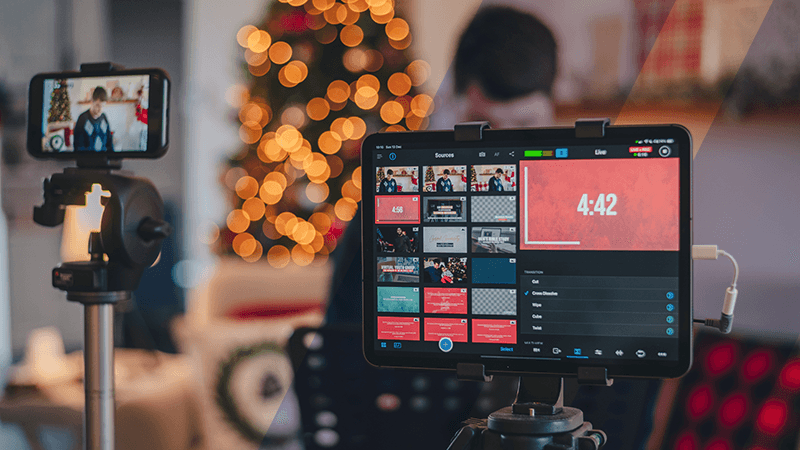Are you looking to create a unique and engaging ecommerce graphic design for your online store? Do you want to build a visually appealing website with the perfect color palette, typography, and layout? Are you unsure about where to begin?
Don’t worry! This comprehensive guide is designed to answer all your FAQs about ecommerce graphic design. From understanding the key elements of ecommerce graphic design to finding the best graphic designer, we have it all covered. Read on to get all the information you need to create a successful and attractive ecommerce design.
What is ecommerce graphic design?
E-commerce graphic design is the use of visual elements, such as images, typography, and color, to enhance the online shopping experience and promote products or services for sale on e-commerce websites.
The key elements of ecommerce graphic design include:
- Brand Identity: This includes the use of logos, typography, and color schemes to establish a consistent look and feel for the brand.
- Product Images: High-quality images of the products are an important element of e-commerce graphic design as they help customers make informed purchasing decisions.
- User Interface Design: This involves creating an intuitive and easy-to-use navigation system, clear call-to-actions, and other interactive elements to help users find what they're looking for.
- Layout and Typography: A well-designed layout and the use of appropriate typography can help create a sense of hierarchy, making it easier for users to find the information they need.
- Responsiveness: With an increasing number of customers accessing e-commerce sites on mobile devices, it's important that the design be optimized for different screen sizes and devices.
What are the benefits of using professional graphic design for ecommerce?
Investing in professional graphic design is crucial for the success of an ecommerce business. A well-designed ecommerce website can bring tons of value to your business such as:
Improved brand identity and recognition
An ecommerce graphic designer can improve brand identity and recognition by creating a consistent visual style across all marketing materials, developing a unique and memorable logo, designing eye-catching packaging, incorporating the brand's visual elements into digital media, and regularly updating the brand's visual style to stay current and fresh.
Increased customer trust and confidence
If your image is polished and professional, customers are more likely to perceive your products and services as high quality and are more likely to trust your brand over others. This in turn can lead to increased customer loyalty, repeat business, and positive word-of-mouth referrals. In short, a polished and professional image can be a key factor in establishing brand credibility and building customer trust, both of which are essential for success in ecommerce.
Effective communication of products and services
Good design can help bring your products and services to life, making them more appealing and appealing to a wider audience. A designer can help create visual representations of your offerings that are easy to understand and visually appealing, highlighting their unique features and benefits.
For example, an ecommerce graphic designer can create product images that showcase the design and functionality of your offerings, infographics that clearly explain their benefits, and marketing materials that effectively convey your brand message.
Competitive advantage
Having a professional graphic design in your business can help set your brand apart from others in the industry, providing you with a competitive advantage. A well-designed brand identity, website, marketing materials, and packaging can help establish your brand as professional, trustworthy, and of high quality. This can be particularly important in crowded and competitive industries where customers have many options to choose from.
Enhanced visual appeal and user experience
A professional ecommerce graphic designer has the skills and experience necessary to design graphics that effectively communicate the goals and values of your business. They create visually appealing graphics and layouts that can be used on your website, marketing materials, and other platforms to engage customers. With their expertise, they can ensure that your business has a consistent visual style that is both attractive and user-friendly.
Increased conversion rates and sales
Designing your ecommerce digital assets in a simple and interactive way can help you improve your overall sales. By making it easy for customers to engage with your brand, the likelihood of conversions and sales increases, resulting in overall business growth. In other words, a well-designed and effective marketing strategy can drive success by encouraging customers to take action and become customers.
Targeted design
By working with a professional graphic designer, businesses can ensure that their designs are tailored specifically to their target audience, which means they are more likely to resonate with them and achieve their marketing goals.
For instance, if the target audience is younger, a graphic designer might use brighter colors, bolder fonts, and a more modern design aesthetic. If the target audience is older, a designer might use more traditional colors, fonts, and imagery that is more familiar and appealing to that group.
Efficient use of limited space
When it comes to advertising and marketing, having materials that effectively convey your brand message is crucial. Business cards and brochures, in particular, present a challenge as they have limited space. In this situation, professional graphic design can play a significant role in helping you resolve these design challenges.
Simplifying complex ideas
A professional graphic designer can create visual representations of complex concepts, ideas, and information that are easy to understand and memorable. They can simplify complex data and present it in a clear and easy-to-grasp format, such as charts, graphs, and infographics. This can make a big impact on the effectiveness of the communication, as visual information is easier to process and recall than text alone.
What is the best graphic design software for ecommerce?
Choosing the right graphic design software can be a daunting task, but with the right tools, your creative production becomes much easier. Below is a list of best graphic design software for ecommerce graphic design:
Adobe Creative Cloud (Photoshop, Illustrator)
Adobe Creative Cloud is the industry standard for graphic design and is commonly used by professional designers. Photoshop is a popular raster-based image editing tool while Illustrator is a vector-based graphic design software.
Canva
Canva is a user-friendly and intuitive graphic design software that is perfect for ecommerce businesses, bloggers, and content creators. It offers a variety of templates, images, and design elements to help you create stunning graphics.
Sketch
Sketch is a powerful graphic design software specifically designed for UI and UX design. It is widely used by web and mobile app designers, and it integrates well with other design tools and systems.
Inkscape
Inkscape is a free and open-source vector graphics editor that is ideal for creating simple graphics and illustrations. It's a great option for small ecommerce businesses or for those just starting out with graphic design.
GIMP
GIMP is a free and open-source alternative to Adobe Photoshop. It offers a similar range of features, including photo retouching, image manipulation, and graphic design.
Figma
Figma is a cloud-based graphic design software that allows for real-time collaboration and team management. It's made for ecommerce businesses with a remote team or those that need to work on designs with multiple stakeholders.
Affinity Designer
Affinity Designer is a vector-based graphic design software that offers high performance and precision. It's a great alternative to Adobe Illustrator, and it's more affordable.
CorelDRAW
CorelDRAW is a powerful graphic design software that offers a wide range of tools for vector graphics, layout, photo editing, and more. It's ideal for ecommerce businesses that require a professional and versatile graphic design solution.
Gravit Designer
Gravit Designer is a free and open-source graphic design software that offers a range of features for vector graphics and illustrations. It's a great option for small ecommerce businesses and hobbyists.
Blender
Blender is a free and open-source 3D graphics software that can be used for creating product images, animations, and visual effects. It's a perfect tool for ecommerce businesses that sell 3D products or require 3D graphics for their products.
How to create a visually appealing ecommerce website?
Creating a visually appealing ecommerce website is crucial to attracting and retaining customers. With the right design elements and layout, a website can effectively communicate the brand image and enhance the shopping experience. Here are some expert tips to help you create a visually appealing ecommerce website.
1. Simple and clean design
Opt for a simple and clean design that showcases products in an organized manner and makes navigation easy for customers.
2. High-quality images
Use high-quality images of your products to give customers a clear understanding of what they are purchasing. You can hire a product photo editor to ensure you have high quality images on your product catalogs.
3. Brand consistency
Ensure that the design, color scheme, and font style are consistent with your brand image across all pages.
4. Mobile-responsive design
With more and more people shopping on their mobile devices, it's crucial to have a mobile-responsive design that adjusts to different screen sizes.
5. Easy navigation
Make sure your website has a clear and easy-to-use navigation menu that helps customers find what they're looking for quickly.
6. Product reviews
Incorporate product reviews and ratings to increase customer trust and provide valuable feedback to potential buyers. You can outsource customer survey services to help you with your customer data collection.
7. Fast loading speed
A fast loading speed is crucial for providing a good user experience and keeping customers engaged. Investing in fast website hosting and optimization can help ensure that your website loads quickly and provides a smooth shopping experience for customers.
What are the latest trends in ecommerce graphic design?
For 2023, experts agree that the following design trends will take the ecommerce industry by storm:
Bold, bright, and vivid colors
Ecommerce websites are using bold and bright colors to grab the attention of their customers and create a memorable visual impact.
Minimalistic design
Minimalistic design is a clean, uncluttered, and simple approach that focuses on the essentials and emphasizes the products.
Asymmetrical layouts
Asymmetrical layouts are becoming increasingly popular in ecommerce design as they break away from traditional symmetry and provide a fresh and modern look.
3D elements and animations
3D elements and animations are being used to bring products to life and add a new level of interactivity to ecommerce websites.
Dynamic typography
Dynamic typography is the use of typefaces, font sizes, and color to create visual interest and enhance the user experience.
Hand-drawn and organic elements
Hand-drawn and organic elements add a personal touch and humanize the brand, making it feel more approachable and relatable.
Integration of AR and VR
AR and VR technologies are being used in ecommerce to allow customers to experience products in a virtual environment, enhancing the online shopping experience.
Textured backgrounds and patterns
Textured backgrounds and patterns add depth and dimension to ecommerce websites, making them more visually appealing and memorable.
Bold and oversized product imagery
Bold and oversized product imagery is being used to showcase products in a visually impactful way, drawing the eye and helping to increase sales.
Use of abstract shapes and geometry
Abstract shapes and geometry are being used to create visually interesting backgrounds, add graphic interest, and enhance the overall aesthetic of ecommerce websites.
What is the cost of ecommerce graphic design services?
The cost of ecommerce graphic design services can be influenced by several factors, including the location and experience of the designer.
In the United States, the cost of hiring a graphic designer is relatively high, with the average annual pay for an ecommerce graphic designer being $53,828 a year, or approximately $25.88 an hour. This is likely due to the higher cost of living and the higher demand for skilled graphic designers in the United States.
On the other hand, you can hire a graphic designer in the Philippines at a much lower cost. The average salary for a graphic designer in the Philippines is $7789.24 per year, or $3.12 per hour, which is significantly lower than the cost of hiring a graphic designer in the United States. This lower cost is likely due to the lower cost of living in the Philippines and the lower demand for skilled graphic designers in the region.
In summary, the cost of ecommerce graphic design services can vary greatly depending on the location and experience of the designer. Companies and individuals should consider these factors when deciding where to hire a graphic designer and what budget to allocate for this service.
How to find the right graphic designer for your ecommerce store?
Finding the right graphic designer for your ecommerce business doesn’t need to take up much of your time and effort. Bring the best graphic designer to your ecommerce team by following these tips from experts:
1. Determine your needs
Clearly define the scope of work you need a graphic designer for and the skills required.
2. Look for portfolio and experience
Look at the designer's portfolio to see if their style aligns with what you are looking for. Check their experience in designing for ecommerce and their understanding of user experience.
3. Ask for references and case studies
Ask for references and case studies from previous clients to see how the designer has worked with others.
4. Communicate clearly
Good communication is key to a successful project. Make sure the designer understands your vision and that you both are on the same page.
5. Set realistic expectations
Be realistic about the timeline, budget, and resources. Make sure you and the designer are aligned on these expectations.
6. Outsource your ecommerce graphic design needs
Outsourcing your graphic design needs allows you to save a lot of time on hiring and onboarding the right talent for you. They can provide you with pre-vetted graphic designers who are ready to start hitting the ground running.
You’ll also save on staffing costs by up to 70% since your service provider handles your recruitment, training, equipment, and office space allowing you to focus on your core business functions.
Optimize Your Ecommerce Strategy with a Trusted Customer Care Provider
To fully optimize your Ecommerce graphic design strategy, make sure that you're knowledgeable about your customers' preferences and trends. Do this by outsourcing customer care to a trusted service provider like ManilaPros.
At ManilaPros, we offer five-star customer care for retailers. We're a full-service outsourcing company that can provide you with vetted, trained, and certified customer support agents for your brand. You will also get a dedicated account manager who can oversee your retail customer service operations for you, giving you more time to focus on your core competencies.
Book a call with us today to learn more.





